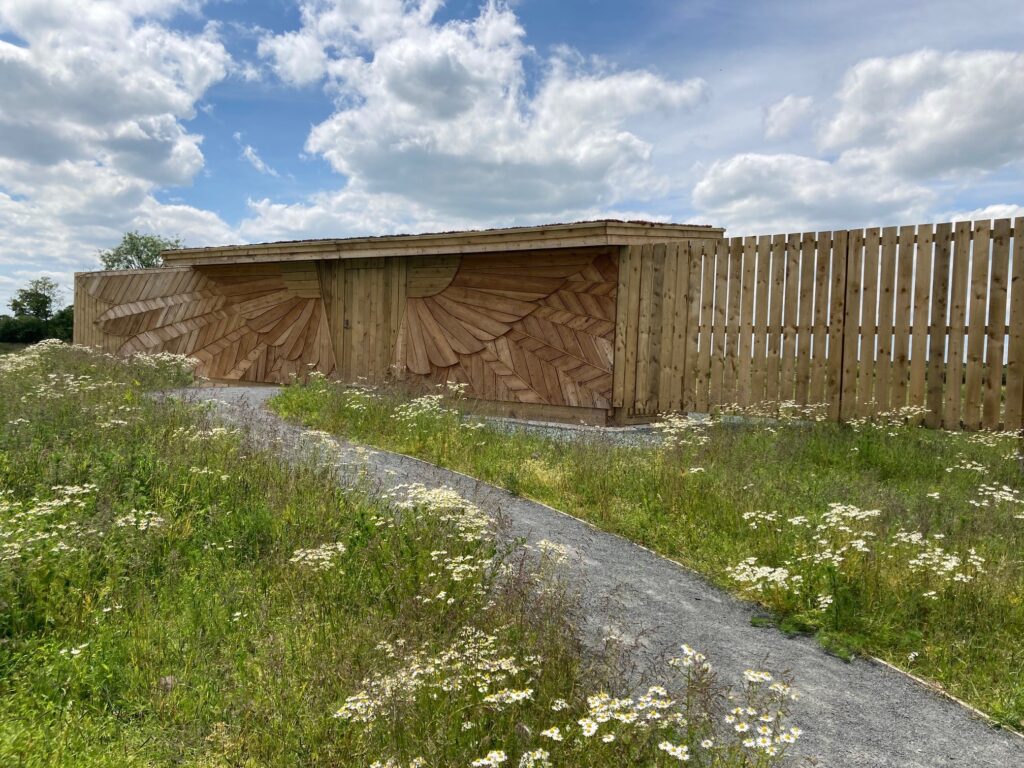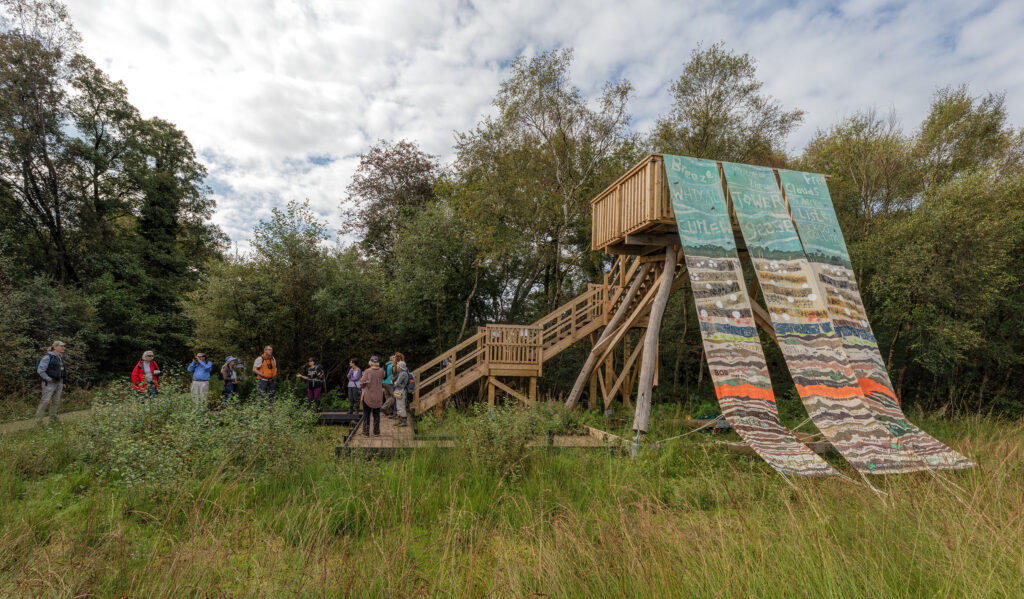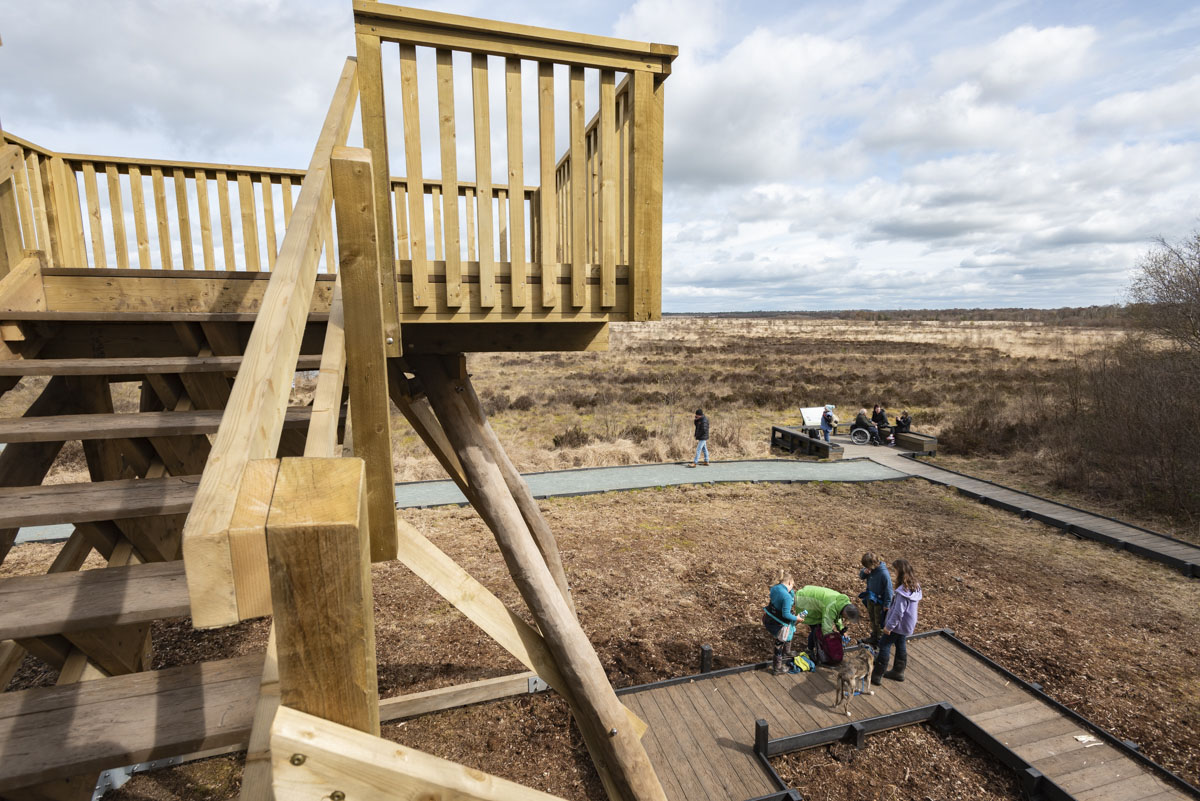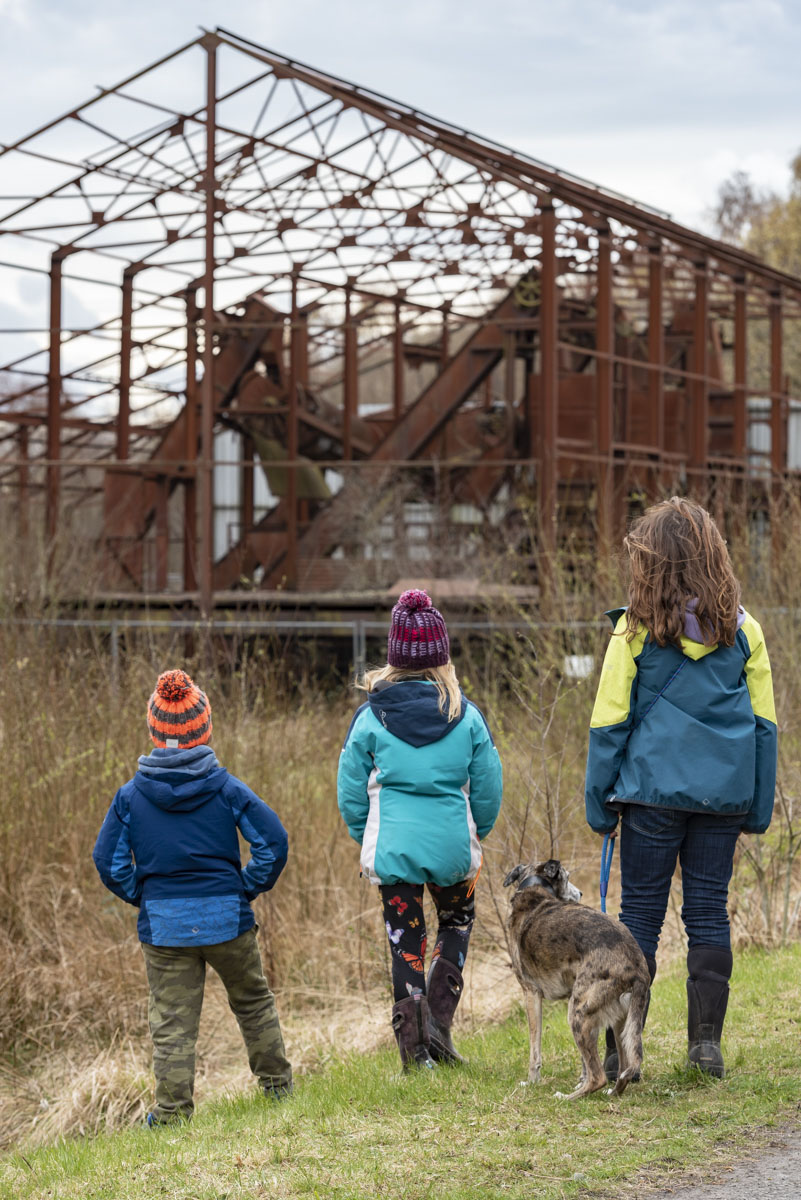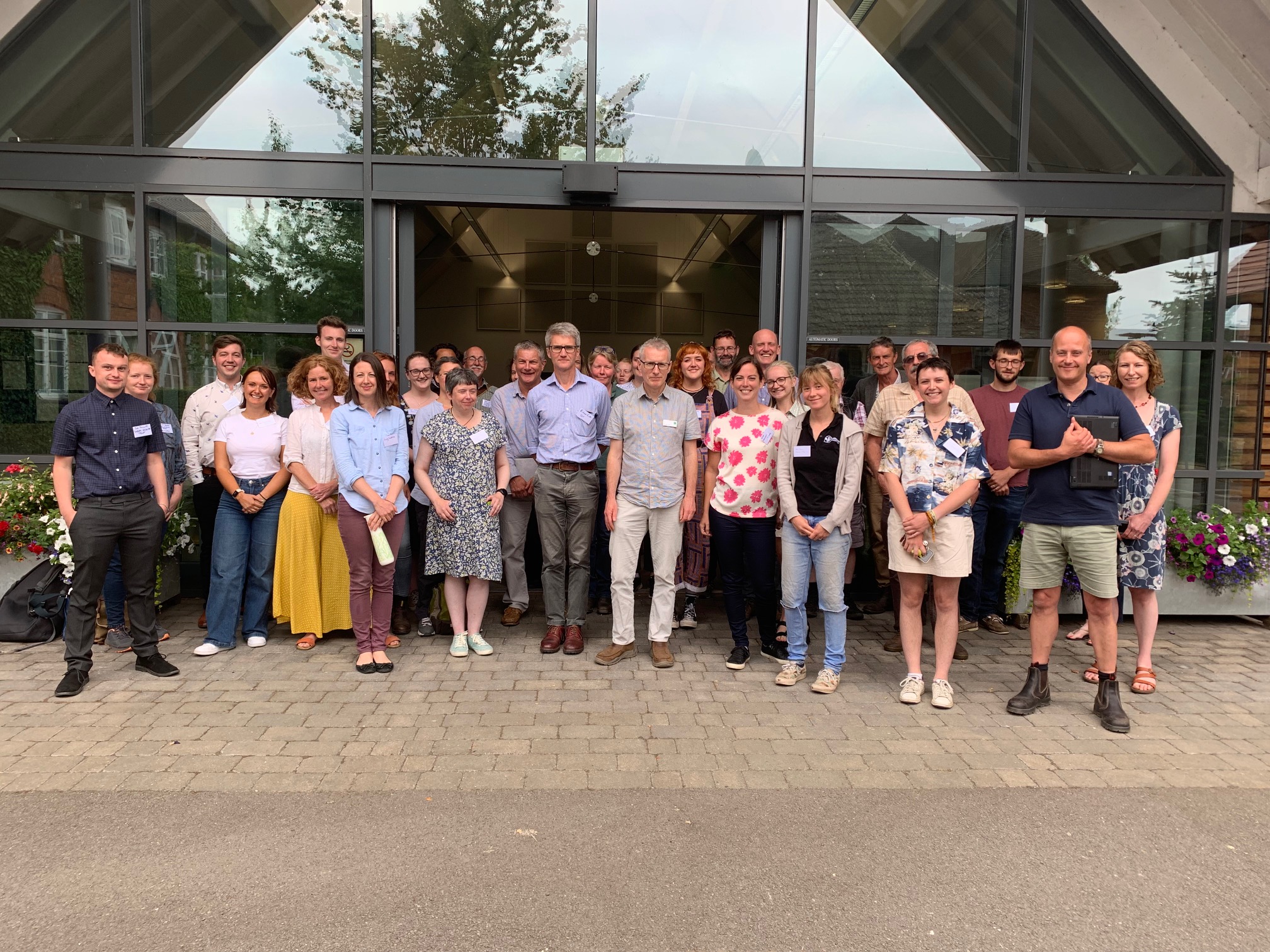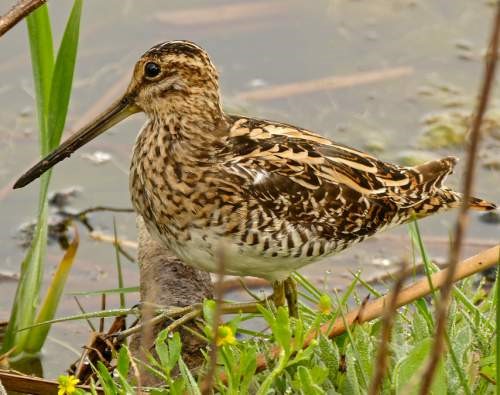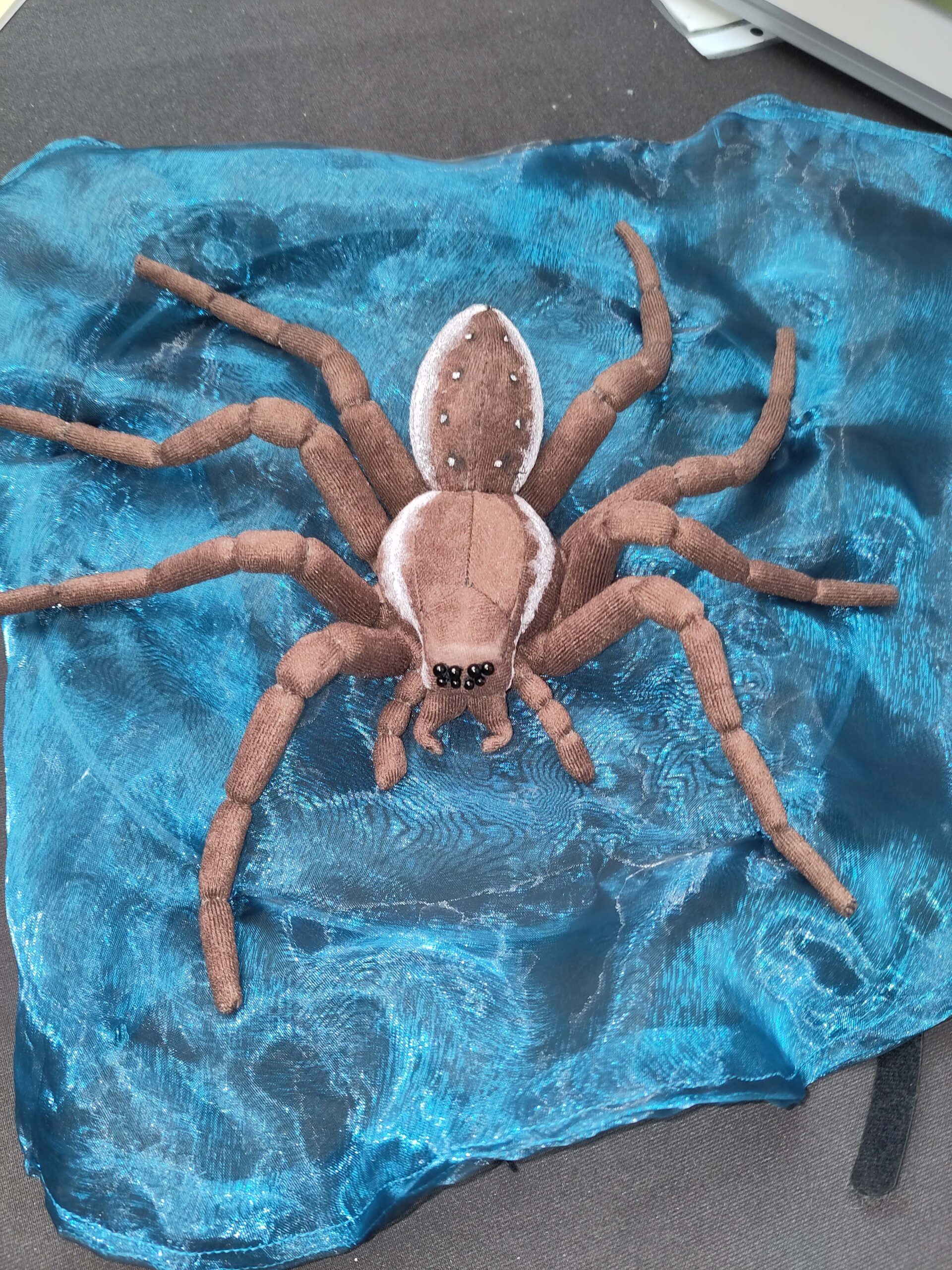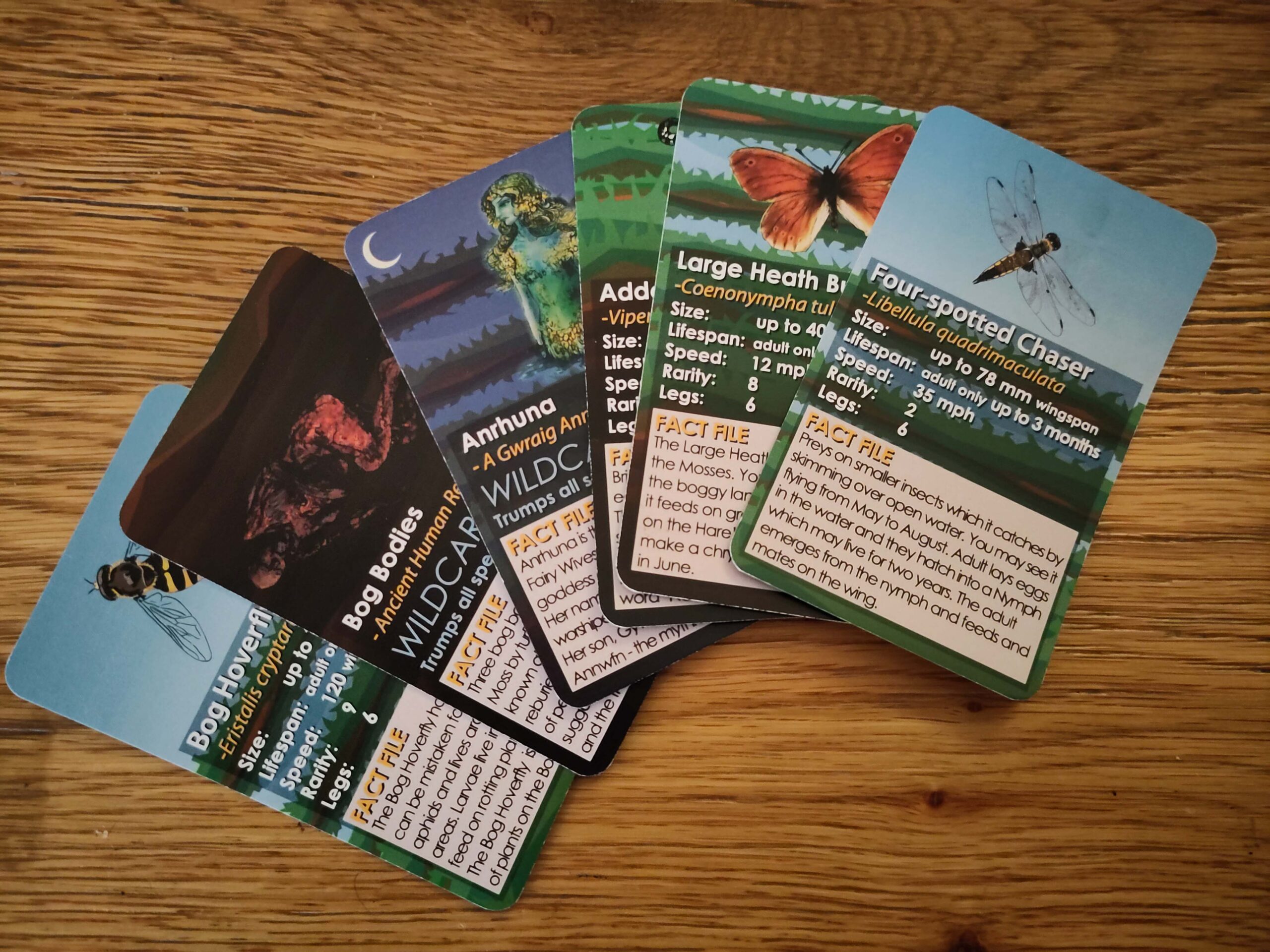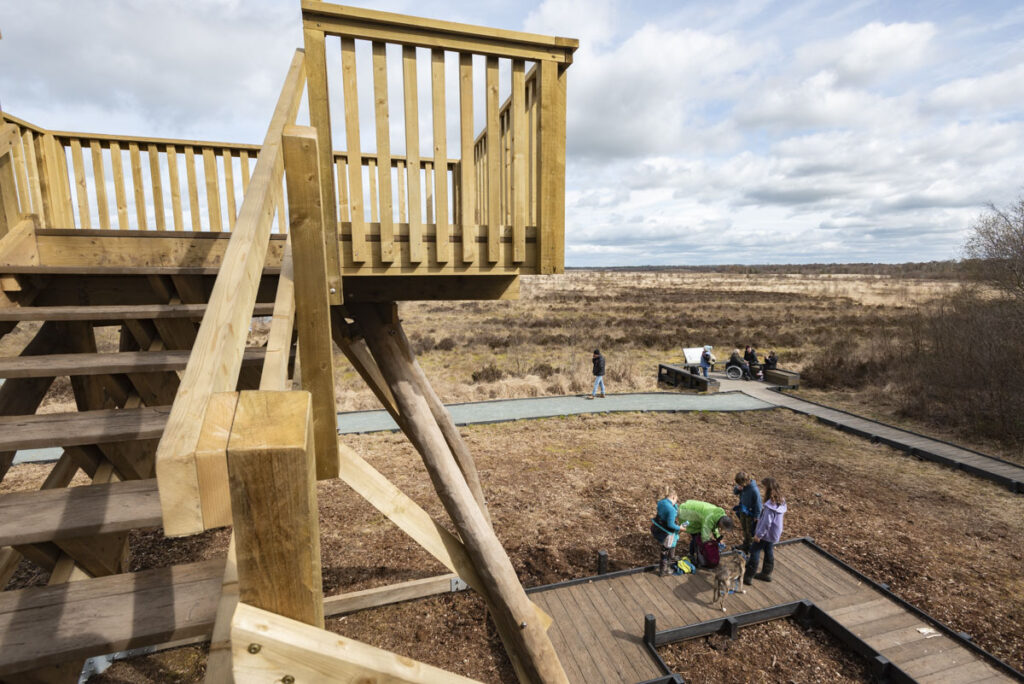Marches Mosses BogLIFE Project Achievements
Over the course of the Marches Mosses BogLIFE Project, Shropshire Wildlife Trust, Natural England and Natural Resources Wales have made huge progress in the restoration of the site, not only for nature but also for the local communities. The project has been funded by the LIFE Programme of the European Union and The National Lottery Heritage Fund. Below is a list of some of the achievements in no particular order.
- The project restored some 665 hectares of the Marches Mosses, improving habitats and valuable ecosystems, while safeguarding its 1.1 million tonnes of carbon, its internationally important biodiversity, and contributing to better water management.
- The construction of several visitor facilities on The Mosses, including the incredible viewpoint of The Mammoth Tower, and the accessible bird hide on Charles Sinker Fields.
- The completion of 3 schemes, Bronington Manor Drain Diversion, Sinkers Fields Wetland Creation, and World’s End Wetland Creation, allowing for the restoration of 30 ha of fen and bog edge habitat.
- The “cell and linear peat bunding” technique used throughout the project has been a success in rewetting the peatland so that it is boggy under foot again. 270km of this bunding was undertaken, which when laid end to end would reach from Shropshire to London.
- Many walking trails have been updated, with detailed maps, information and interpretation. These include exciting waypoints such as the viewfinders on the Green Trail and the QR codes of the Sound Trail.
- Throughout events and community outreach, over 500 schoolchildren and just under 100 teachers have been engaged and educated about The Mosses.
- A range of resources have been created for continued community engagement: A Bouncy Bog which has a replica bog and several wildlife puppets including a dragonfly and raft spider. A “Bog-in-a-box, which takes the mosses to people with a small bog section in a bucket, accompanied by images and natural history objects, snake skins and a replica egg. Also two treasure boxes, one for the Lyneal Trust, which includes a moss dominoes game, a top trumps game and several tactile objects such as scent boxes and a replica peat sample.
- The restoration of the peatlands protects the collective store of 1.1m tonnes of carbon, which is equivalent to annual greenhouse gas emissions of just over 4 million UK citizens. The Mosses store 10x more carbon per hectare than an equivalent area of tropical rainforest.
- In May 2022, the project won two West Midlands Institution of Civil Engineering (ICE) Awards – one for Sustainability Category and one for Project of the Year. In September 2022, the project was also one of only six projects to be shortlisted for the International ICE People’s Choice Awards 2022.
- 291 volunteers have worked on the project, providing just over 2,362 days of their time at an estimated value to the project of 275,327 (£236,700). Volunteers also won a Natural England Team Volunteers Grafta award in recognition of their achievements.
- The project has had a successful trainee programme, all seven trainees have gone on to work in the nature conservation sector.
- Different types of important restoration work completed, such as 90 ha of forest to bog restoration, and innovative pasture to bog restoration trials using over 100,000 sphagnum plug plants.
- The project has seen some fantastic milestones in progress for restoring the ecosystem of The Mosses. Water voles have spread to new habitats improved by the project, Waved-forked moss (one of the rarest bog plants) has been found to be thriving, Snipe returned to breed after 30 years despite UK populations decreasing significantly. Curlew population appears stable and possibly increasing, and starling murmurations are a beautiful common sight on The Mosses.
- The project purchased a scrapyard on the edge of Whixall Moss and cleared it which has helped to deal with the risk of pollution and contamination of the bog. In total, around 677 tonnes of weight in tyres were removed from the scrapyard.
- Throughout the project there has been ongoing community interaction with The Mosses, namely the Wem Youth Club creating 3 art banners celebrating the landscape of the mosses, and Wem Library hosting the Mosses Christmas Tree in 2021. Natural England and Shropshire Wildlife Trust supported Andrew Howe’s international art project, The Mosses and Marshes.
- Despite the impact of the COVID pandemic, over 150 events were held by the project. These events reached over 3,500 people, including a wide range of individuals, from primary school children to the elderly, and with a focus on connecting local people with the Marches Mosses.
- Work has been undertaken to improve the site’s accessibility, such as the bird hide, and the boardwalk of the Mammoth Tower. There is more access information and a site accessibility statement.
- There are multiple Virtual Reality Headsets loaded with drone footage for use at events which show The Mosses from a very different viewpoint.
- The Mosses had visits from several VIP guests including Tony Juniper (Natural England Chair), Roger Owen (Shropshire Wildlife Trust Chair), Sir David Henshaw (Natural Resources Wales chair), Craig Bennett (CEO Royal Society of Wildlife Trusts), Simon Baynes (MP for Clwyd South), Iolo Williams (Naturalist and TV Presenter).
- The National Nature Reserve (NNR) size increased by approximately 100 ha following new land acquisitions by Natural England, Shropshire Wildlife Trust and Natural Resources Wales. This is an increase of 15%. The NNR now covers an area 764.99 ha, an area so large that it can be seen from space.
- The Marches Mosses have featured on TV programmes such as Countryfile and Springwatch.
- The Mosses have featured in books, namely The Peatlands of Britain and Ireland – A Traveller’s Guide, Rewilding: Real Life Stories of Returning British and Irish Wildlife to Balance, and a book by Andrew Howe & Kim V Goldsmith titled ‘Mosses & Marshes’.
- The total GVA produced by the project in the regional economy (i.e. within 50 miles of the Marches Mosses and including the local economy area) is estimated to be €4,046,538 (£3,478,828) and the number of job years created is estimated at 125.1.
- Harper Adams University hosted an end of project conference in July 2022, titled the “Restoring Lowland Peatland for Biodiversity & Carbon Conference”. The Marches Mosses team also attended the IUCN UK Peatland Programme 2022 Annual Conference, showing banners, posters and a VR Headset to other delegates.
- A Shared Nitrogen Action Plan has been produced with stakeholders; it aims to raise awareness and coordinate efforts to constructively deal with the problem of excess aerial nitrogen deposition affecting the bog.
Project Pictures
